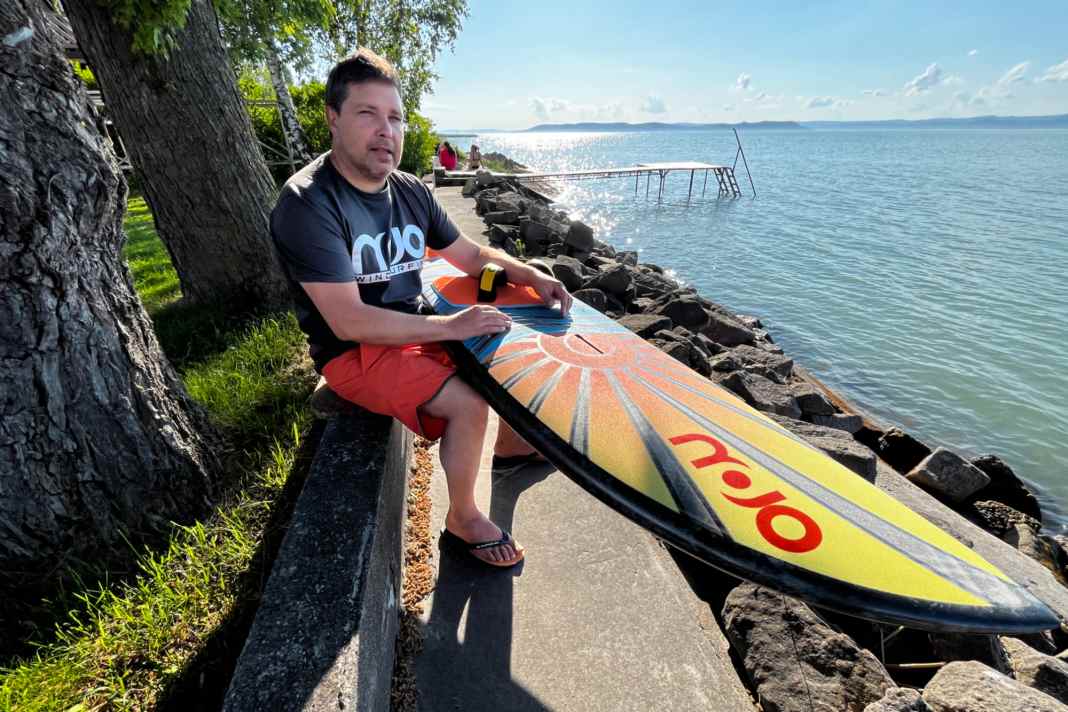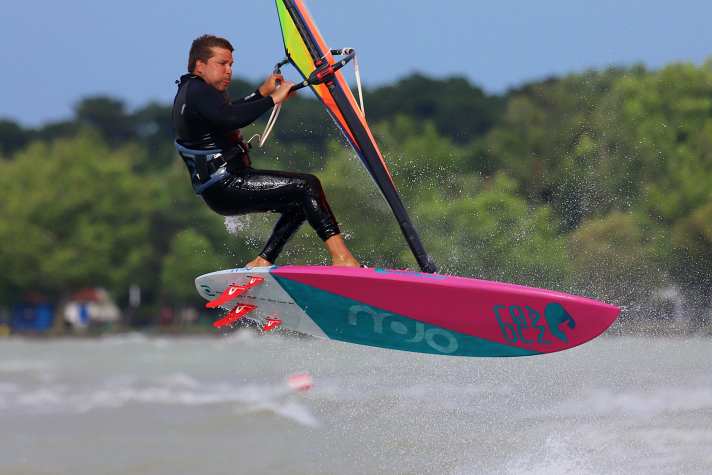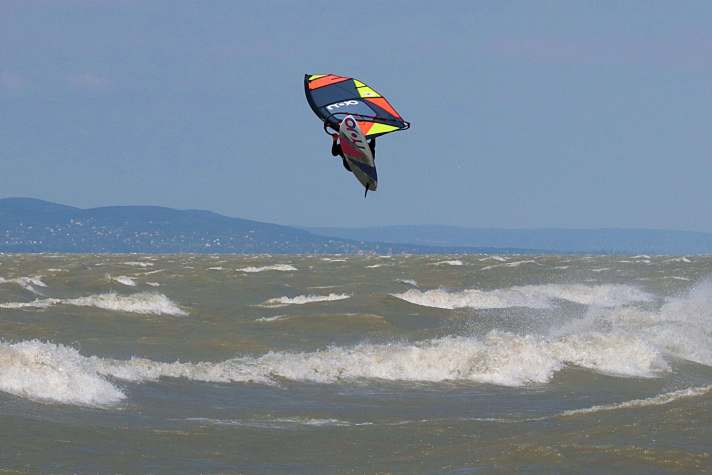





With its eye-catching designs, Mojo Boards was a real surprise at the 2025 surf festival. But there is much more to the Hungarian brand than just looks - as Bertalan Csik explains in an interview.
Bertalan, in 2025 you were at the surf festival on Fehmarn for the first time - an island that stands for freeride and flat water spots like no other spot in Germany. Mojo is probably better known to wave surfers. How did you find the response to your products?
Firstly, I have to be honest and admit that I'm pretty impressed with this event! There are a lot of interested people here, everything is super organised, the atmosphere is great and the weather is much better than the forecast a few days ago (laughs). And I'm a little flattered that there was hardly anyone at our stand who didn't know Mojo at all. Mojo is no longer a completely unknown brand, but it is of course important that people can see, touch and try out the boards.

Mojo comes from Lake Balaton in Hungary, but you've made a name for yourselves as a wave brand so far. How does that fit together?
My own heart beats for the wave, we have already travelled to a wide variety of wave spots such as Maui, Cape Verde and the Canary Islands. So of course it's only natural to get involved with wave shapes. Our home spot is Lake Balaton, where you can also have great jumping conditions with lots of wind. What's more, the wave scene is traditionally more open to custom brands, whereas the typical freeride target group tends to favour well-known brands. That's completely understandable, because if you can spend less time on the water, you usually don't have the time or desire to experiment. But, to be honest, we never wanted to establish ourselves as a wave brand. Our product portfolio goes far beyond that and also includes freeride, freerace and even wingboards.
Is it harder for you to design a good freeride shape than a good wave shape?
No, not really. Because when you've been at it for so long and look left and right, you get a good feel for what works and what doesn't. Once you have understood which shape detail influences which riding characteristics, shaping is like a puzzle - you can combine a board from proven rocker lines, outlines and rail shapes without experiencing any nasty surprises. And don't forget: We don't want to reinvent windsurf boards! Our boards are not experiments but have a plug & play character with a wide range of applications. Whether waveboard, freewave or freeride.
We don't want to reinvent windsurf boards!
What makes your boards so special?
As I said, proven shapes with a wide range of applications. They also have a special look and, of course, the advantages of custom technology: high quality and the ability to customise certain parameters, such as strap positions.

Who develops the Mojo shapes and where do you get your input and feedback from?
We also have a well-known team rider in Josh Angulo. But let's be honest: I don't need a World Cup team rider for good feedback, I can also get that from "normal" hobby surfers. In fact, I believe that this feedback is at least as valuable. We are therefore in contact with many end customers and collect feedback.
How many people are on the team and how many boards do you build each year?
We have grown in small steps over the years. We don't have an investor who gives us money for marketing or team riders. In recent years, we have built around 150 boards a year. We are five people. I'm the computer guy, I do the shape files, the communication with the customers and the ordering of the raw materials. Then we have Jani, he is the master of the CNC machine. Then there are two employees who are responsible for the actual construction of the boards, i.e. laminating, building the carbon fin boxes and so on. And then we have Rudy, a specialist for the graphics and finishing.
How difficult is it to grow as a windsurfing brand at the moment?
We don't necessarily want to grow! With the existing crew, we could perhaps manage 180 boards a year. But more would only be possible with a bigger team and then you have to make compromises again, which aren't always good. Windsurfing is not a growth market, so you don't have to kid yourself. You have to bring a lot of enthusiasm and idealism to the table. We want to keep the quality high and emphasise our strengths. Most people who order a board from us come on the recommendation of other Mojo customers.
What do your constructions look like?
One of the most important aspects is that all mast boxes and fin boxes are built in full carbon. You save a lot of weight, between 500 and 700 grams on a board. That's weight that I can put back into better materials. In other words, we don't have to save on resin. Resin makes up the largest proportion of a board's weight, between two and 2.5 kilos depending on the board size. So theoretically you can really save weight here. But resin is also the most important factor, because the carbon and glass layers only hold if they are well impregnated. This is also the reason why minimum weight and maximum durability cannot be reconciled. Another key aspect of our designs is our X-Core concept.
Most boards break because the core softens in the standing area and the laminate breaks as a result
What's it all about?
The most common problem with windsurf boards is that the core under the laminate becomes soft due to the constant impacts. At some point, the deck laminate then collapses. The primary aim should therefore be to prevent the core from giving way in the standing area. This is why we mill cylindrical holes in the standing area that go from the deck to the underside. A rigid foam is inserted into these holes, which is then bonded to the sandwich material at the top and bottom. This creates a stable framework and the core cannot give way in the standing area.

